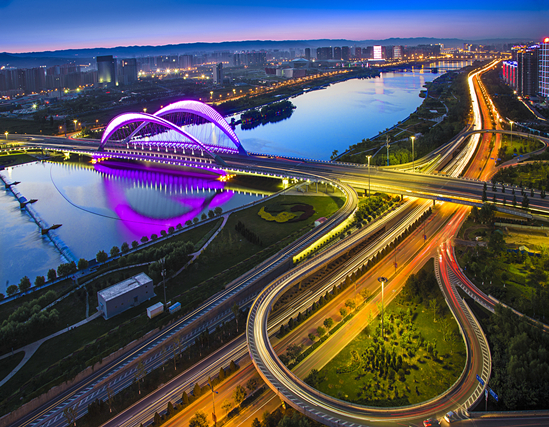Shanxi enhances wetland protection and restoration
Updated: 2023-07-12

Egrets forage for food in a wetland in Pinglu county, Shanxi province. [Photo/Shanxi Daily]
North China's Shanxi province has been committed to protecting and restoring its wetland ecosystems for years, with multiple measures taken.
Located on the Loess Plateau, Shanxi faces challenges in wetland conservation due to its limited wetland resources and their scattered distribution. The total wetland area in the province is 221,200 hectares, which is classified into five categories, including forest swamps, shrub swamps, and inland mudflats.
In recent years, the province has launched an extensive wetland protection campaign. It has established wetland conservation institutions, implemented wetland ecological restoration projects, and established natural conservation areas and wetland parks in ecologically important areas such as the Yellow River, Fenhe River, Sanggan River, and Hutuo River.
So far, it has designated 10 provincial-level important wetlands and built 63 wetland parks, including 20 at the national and 43 at the provincial level.
"Next, we will continue to promote the construction of a wetland protection network. Wetlands with distinct ecological features, unique natural landscapes, and which are suitable for ecological displays, scientific education, and eco-tourism activities will be included in wetland parks for protection and management,” said Wang Zhanqin, director of the Shanxi Natural Reserve Service Center.
Shanxi once suffered from severe wetland pollution and poor conditions for wetland restoration because of abnormal discharges of industrial and domestic wastewater.
To clear up this form of pollution, Shanxi launched large-scale restoration and reconstruction projects for degraded or lost wetlands using the appropriate ecological techniques and engineering measures.

Tourists enjoy natural scenery in Zhangze Lake National Wetland Park in Shanxi. [Photo/Changzhi Daily]
The province has since integrated and optimized its natural reserves, strengthened law enforcement to better protect its wetlands, and strictly prohibited activities that would harm local wetlands.
"From 2018 to 2020, we have restored about 866 hectares of abandoned farmland into wetlands, gradually solving long-standing issues such as land reclamation and grazing in wetland park areas. This has accelerated the restoration of wetland ecosystems and promoted the sustainable development of wetland resources," said Lu Dapeng, director of the Shanxi Gucheng National Wetland Park.
The water quality and substrate conditions of Shanxi's wetland system have consequently improved as a result of these restoration projects. The wetland biodiversity has been continuously enhanced and the productivity and self-sustainability of the wetland ecosystem have been restored.
Statistics show that there are 595 species of wetland vascular plants and 231 species of vertebrate animals in the wetlands of the province.
Furthermore, with the rapid development of urban wetland parks, wetlands have become more attractive to the public due to their unique ecological landscapes and abundant wildlife.
Seizing the opportunities at hand, Shanxi has rationalized the utilization of wetland resources and developed tourism and sightseeing activities, which has driven rural tourism and led to increased incomes for surrounding communities.



